With autumn comes that back-to-school feeling – and actual school, depending on how old you are. So why not hold on to the feeling of being on holiday by taking in an attraction where you actually live? Even if you have some experience on the other side of the fence…
Have you ever worked as a tour guide? Until I did a spot of it earlier this summer, it was pretty much my fantasy job. Alas, the dream was quickly shattered: the problem was not my unanimously charming clients, nor the crowds packing out the museums of Paris and its environs; it was other tour guides. The cacophony of hearing your own rehearsed factoids pre-empted in unison by dozens of other semi-qualified voices was excruciating. Indeed, the only thing preventing my charges from rumbling me as a Wikipedia-educated fraud was the fact they could barely hear me.
It fast became obvious that the ideal place to learn about the history and character of modern Paris lay far away from the summer scrum that is the Louvre – ideally, somewhere slightly off the beaten track, out in the open and, crucially, free of ‘expert’ competition. My local park, say.
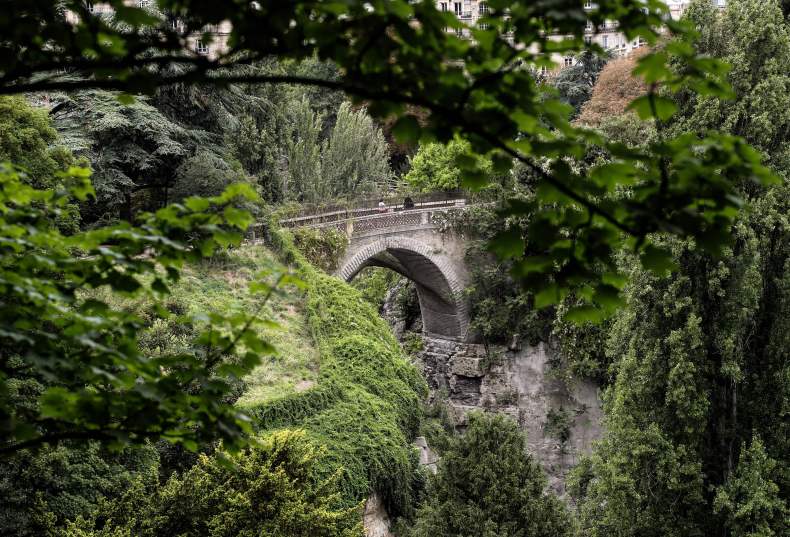
The park makes the most of being created on the site of a former quarry. Photo: Jacques Demarthon/AFP via Getty Images)
It helps that the parc des Buttes-Chaumont is possibly the crowning glory of Haussmann’s grands travaux, a comma of green punctuating the hilly and densely populated 19th arrondissement. It is a spectacular achievement of mimetic landscaping replete with an artificial waterfall cascading into an artificial lake surrounding an artificial island, itself topped by a Grecian folly masquerading as a temple to Sybil. The park’s ‘wooden’ fences are made of concrete, its Swiss cheese of caves and grottoes entirely manmade. Indeed, it’s almost shocking to discover that the (real!) suspension bridge traversing the lake isn’t merely a piece of trompe l’oeil set dressing.
You could condemn it all as so much Second Empire kitsch – and to be sure, that is a large part of its appeal – but it’s a place of genuine wonder. Its lawns, intersected by wildly curving paths, tumble down from street level to the lake at an impossibly steep angle, with only the odd tree to break your fall should you slip. From its heights – and they really are high – you get an almost-complete panorama of northern Paris, from the Sacre Coeur and the po-mo skyscrapers of the Avenue de Flandre out to the endless high rises of the suburbs. Louis Aragon, writing of one of his walks through the park in Paysan de Paris, described it as a ‘paradis légendaire’. He wasn’t wrong.
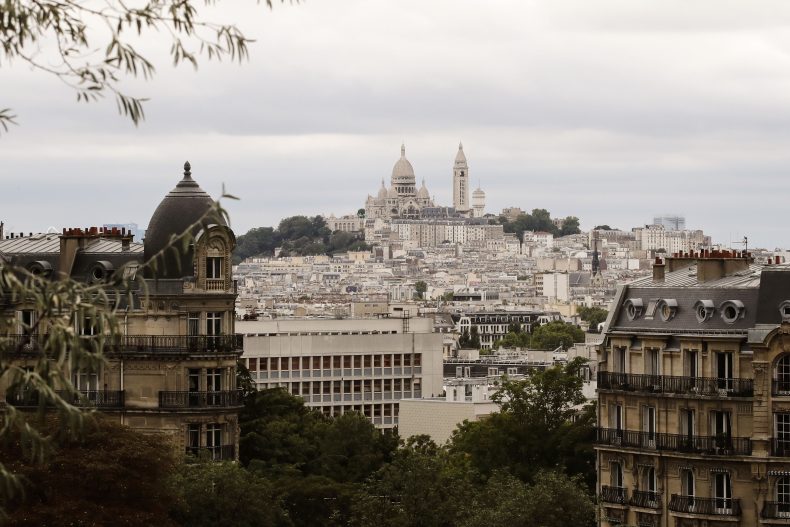
A view of the Sacre Coeur Basilica from the Parc des Buttes-Chaumont. Photo: AFP Photo/Jacques Demarthon via Getty Images
The fantasy topography is a palimpsest of the vast gypsum quarries that once occupied the site, the bewildering crags and hills a prettification of the lawless moonscape left following their closure in 1860. Haussmann and the genius engineer Jean-Louis Alphand (who himself described the site as ‘the receptacle of all Paris’s filth’) conceived the park as an artful covering of the eyesore, itself a serious hazard to public health – in another role still, the site had served as a mass dumping ground for victims of a nearby gibbet. Haussmann’s manifesto for the Buttes-Chaumont – to create ‘a Tuileries of The People’ – belied the fact that it was in part, according to local historian Martine-Annabelle Arak, intended as a motor for the gentrification of the impoverished surrounding area.
Beginning in 1864 under Alphand’s direction, the project saw more than a thousand labourers and hundreds of horses tasked with filling in and turfing the site. Statues were forged and installed, water was channelled and pavilions, recreation areas and restaurants – one de premier ordre, two de second ordre – constructed. Opening to coincide with the Exposition Universelle of 1867, it was initially well-received: it was, according to Le Petit Journal, ‘the most beautiful thing that Paris has to show for itself’.
Alas, its grace period didn’t last long. Just a few years after its inauguration, it became a battleground: in 1871, the soldiers of the Paris Commune captured government artillery stationed on its heights and used it to bombard the advancing army of Versailles. The park was one of the final rebel holdouts during the Semaine Sanglante, reverting to an old role when some 300 dead communards were thrown in the lake.

Engraving of the burning of a petroleum reservoir at the Parc des Buttes-Chaumont during the Franco-Prussian War, published in the Illustrated London News, on 22 October 1870
Subsequent reopening and restoration couldn’t revive its initial appeal. The hoped-for middle-class migration to the surrounding area failed to materialise, and – fulfilling Haussmann’s stated aims, however disingenuous – it became an almost exclusively proletarian attraction, largely shunned by the bourgeoisie until the first tentacles of gentrification touched the 19th in the 1990s. The park’s high-maintenance amenities have since seen it exposed to decades-long stretches of neglect, interspersed with the occasional injection of cash. The last significant renovation project, in 1999, cost €15m and restored the park to something approaching its original splendour. Yet it remains a sinkhole for public money.
As early as 1967, Ian Nairn was warning readers of his guide to Paris that the island was ‘inaccessible’ and the lake semi-drained due to unspecified restoration work. Strengthening procedures have become increasingly necessary in the decades since; the unfortunate reason that the soft local gypsum can no longer support large sections of the park. At present, many of its most interesting features – its weird, sci-fi art grottoes, the island and its temple – are critically unstable and temporarily closed to the public as the city undertakes a comprehensive effort to prevent their collapse. I can only hope it succeeds – because, to call on Nairn again (and – forgive me – advertise my services as a tour guide), this really is ‘one of the sights of Paris’.
Unlimited access from just $16 every 3 months
Subscribe to get unlimited and exclusive access to the top art stories, interviews and exhibition reviews.

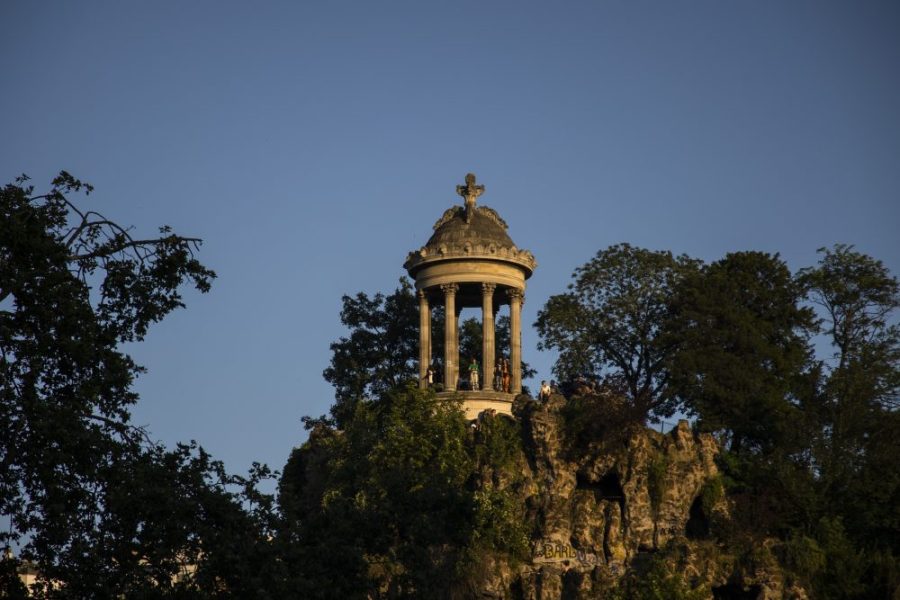
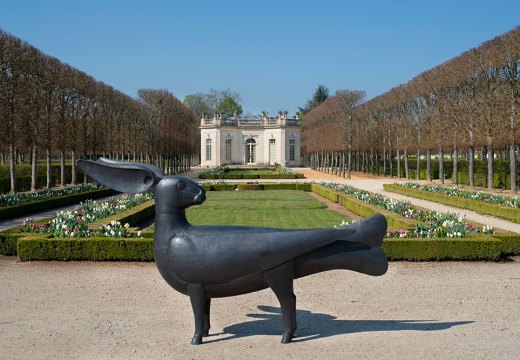
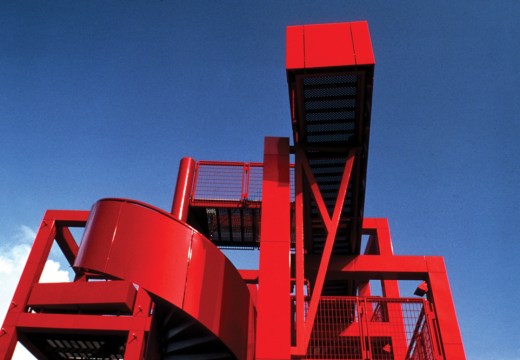
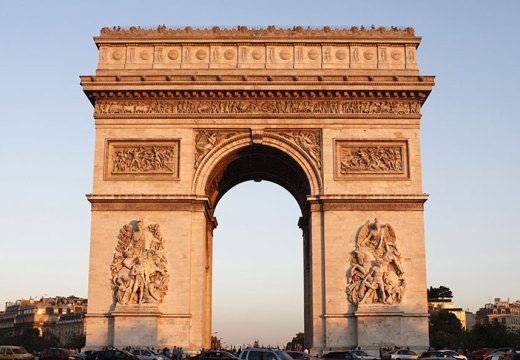









![Masterpiece [Re]discovery 2022. Photo: Ben Fisher Photography, courtesy of Masterpiece London](http://www.apollo-magazine.com/wp-content/uploads/2022/07/MPL2022_4263.jpg)
Has arts punditry become a perk for politicos?